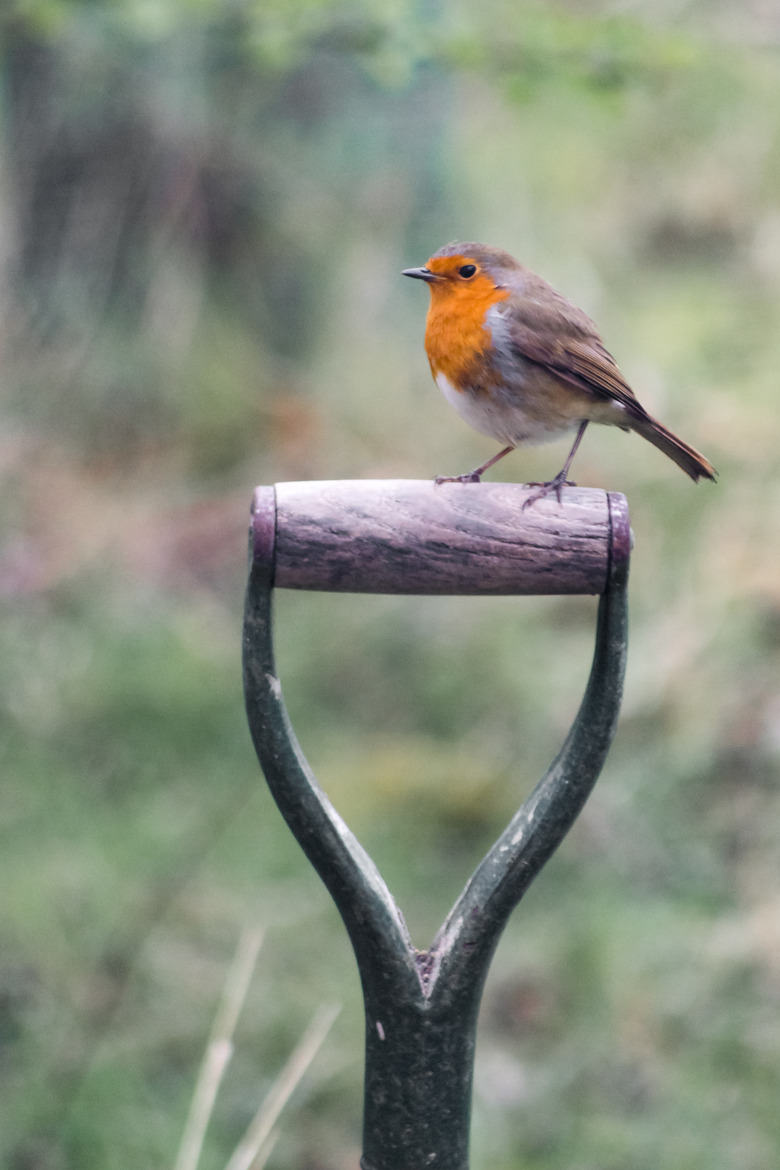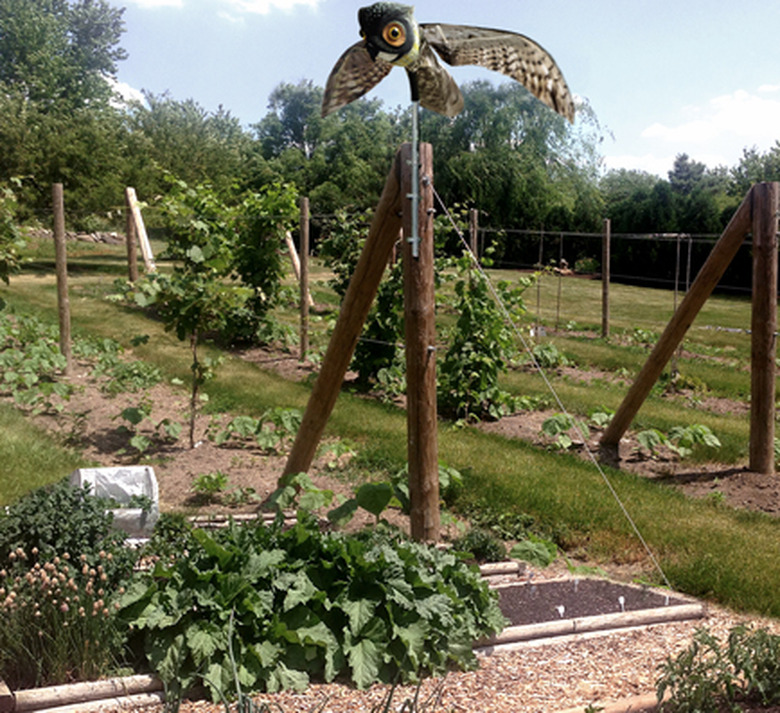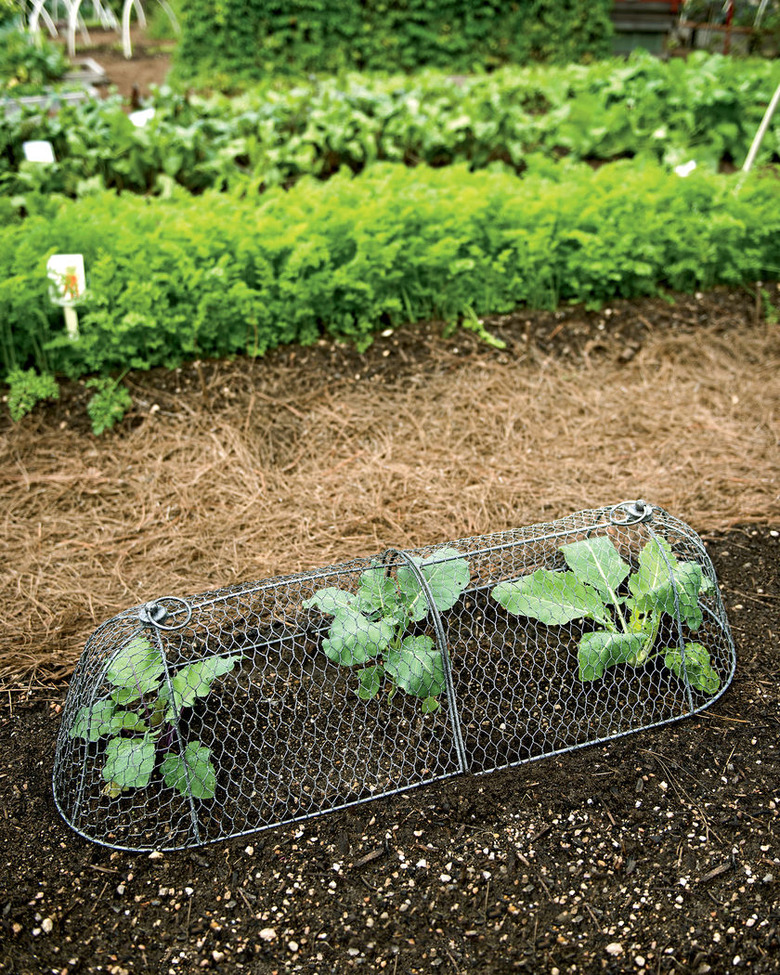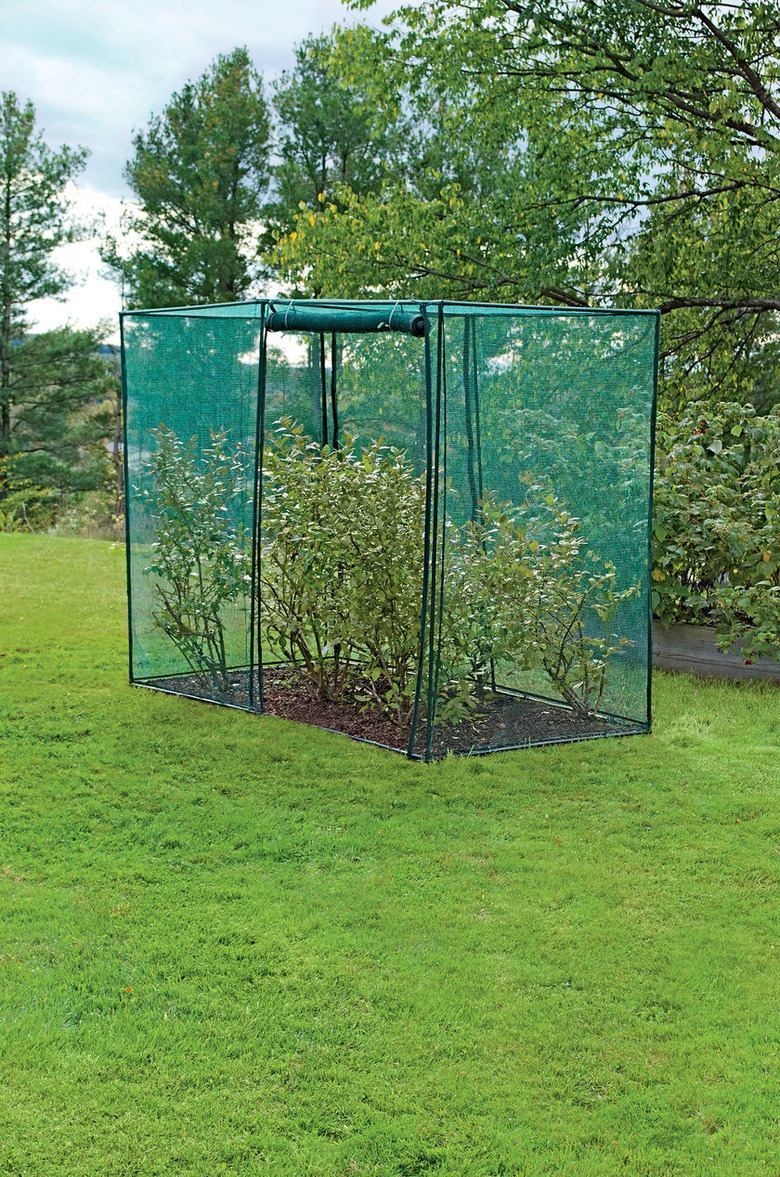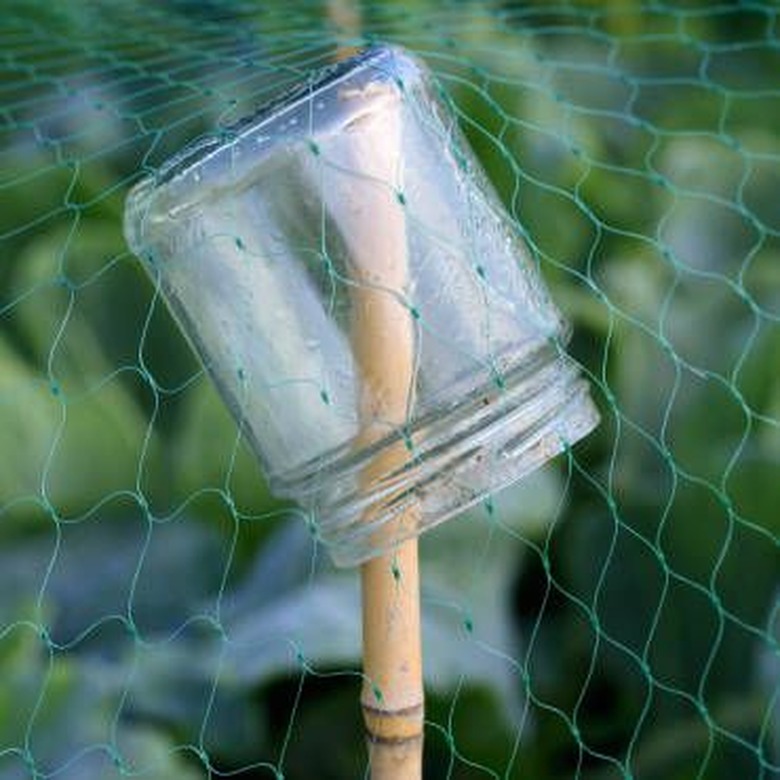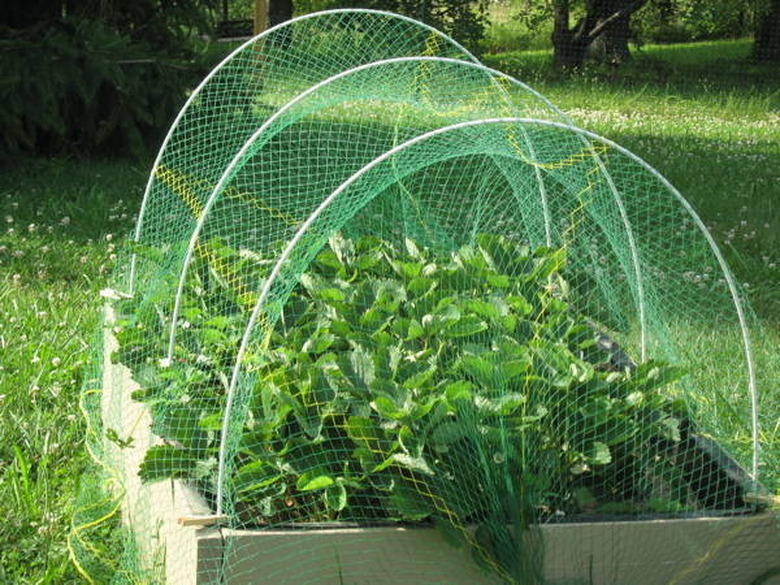How To Keep Birds Out Of Your Garden
Birds are beautiful, and their cheerful chirps are a joy to hear. As a gardener, you'll certainly appreciate the fact that they eat bugs and pests. But you may start wishing they would stay away when it gets to the point of having to battle them for every berry, tomato, or ear of corn in your beds. When birds are treating your garden like an all-you-can-eat buffet, here are methods for keeping them at bay.
Scare Tactics
Scare Tactics
Frightening our feathered friends enemies requires one of several strategies: noise, the illusion of a predator, movement, or flashes of light. Usually, it's a combination of these, because surprise and change in combination is what works to keep scaring them. Otherwise, birds—who really aren't bird-brains at all—invariably get used to the deterrent and quickly learn to ignore your efforts.
Noise and Light Show
A tried-and-true method is to use string to hang several disposable aluminum pie tins to stakes a few feet high. As they get caught by the breeze, the pie tins jerk unpredictably, clatter together, and throw reflections of sunlight that scare off birds. Scare tape has a metallic finish printed with holographs to throw reflections, and it makes noise when whipped by the breeze. Just cut sections a couple feet long and attach them all around your garden.
Pinwheels spin at unpredictable moments and the metallic ones give off reflections, but they don't make much noise. A similar solution involves suspending twisted reflective ribbons made of hard plastic, which glint in the sun. Metal wind chimes will make noise and glint in the sun, and the sail—the part that catches the breeze—can swing around wildly in a way that's alarming to a bird. A cheap, if silent, alternative: hang old unwanted CDs from branches.
Predatory Presences
You can build a scarecrow by hanging old clothes from a T-shaped frame made from sticks or bamboo. It's a fun project to make with kids, and it will fool birds into thinking a human is in the yard—for a while. But if the scarecrow never moves, birds will eventually recognize that the thing isn't alive at all, and is therefore no threat. Adding movement—attaching the scarecrow in a way that it swivels in the breeze, or leaving loose sleeves that flap—will help keep it scary.
An updated version of the scarecrow is to stake inflated mylar balloons on strings in your garden. They'll bob around in the breeze, and the presence will seem threatening to your avian visitors. To enhance the effect, use a marker to draw on a scary face with big eyes, dangle metallic ribbon or scare tape from them, and tie the balloons at head height or higher. Be sure to move them around every few days so the birds don't get accustomed to their presence.
Because snakes prey on birds, birds are afraid of them. Leave hoses or even rubber snakes in sight to ward off birds. Move them from time to time to keep birds thinking it's a live creature.
Owls are another fearsome predator for birds. You can try buying the familiar plastic owl decoy—some have the head mounted on a spring so they'll bob—to install on a fence post or strong stake, moving it around from time to time. This approach doesn't seem to deter birds for long, however. A more effective owl decoy has widespread articulated wings that move in the wind.
Technology Gets into the Game
Makers of modern gizmos are trying to fix this age-old problem.
Motion-activated sprinkler systems use water, motion, and sound to repel birds. They will be effective at first, but some brave birds may keep coming back despite getting sprayed.
Electronic bird repellers broadcast distress calls and predator bird calls, but these won't help you wage garden war effectively, because they don't target most of the birds that eat your produce. Note that ultrasonic noise is ineffective against most birds, because they emit frequencies that are higher than the bird's hearing range. Bird hearing is similar to ours—if you can't hear it, neither will the birds.
The Great Cover-Up
The Great Cover-Up
Scaring birds is only partially effective. The only sure-fire method to thwart birds completely is to install a barrier. Covers let light in but keep varmints out.
Small Covers
You'll find different styles of pricey cloches on the market, made from materials as diverse as plastic mesh, chicken wire, and willow. A less expensive alternative is to cover plants with upside-down plastic cups out of which you've cut the bottoms, or up-ended crates. This solution is appropriate for smaller plants.
Netting
Netting is the best solution of all, especially for larger plants and trees. The netting itself is inexpensive and can last five years or more. To foil birds, use net with 3/4-inch squares.
You can simply lay the netting directly on short plants, such as strawberries. For taller plants, you can buy frames, or build an inexpensive one out of bamboo, tall stakes, or PVC pipe. Laying the netting over a frame prevents it from tangling in plant branches. If you have upright stakes, top them with a small inverted glass jar or plastic cup to keep the netting from ripping, then drape the netting over the structure—it should reach all the way to the ground—and anchor it to the soil with weights or with garden staples, ground spikes, or bent wire.
Depending on your garden's needs, you can use a tent-like frame, one that's shaped like a box, or a hoop house. To make the tent frame, drive tall stakes some distance apart and attach either another stake or a rope at the top to connect them. Drape the netting over the top, spread it out along the ground to shape it like a pup tent, and anchor the bottoms. You can use clips to attach netting to tomato cages.
For fruit trees, drape the netting over the tree, then secure its corners to the trunk.
Warning
Birds can get caught in netting. You don't want to kill them—you just want to keep them off your plants! So when you go out daily to tend your garden and pick vegetables or fruit, scan the netting to see if there are any hapless trapped creatures that need to be freed.
